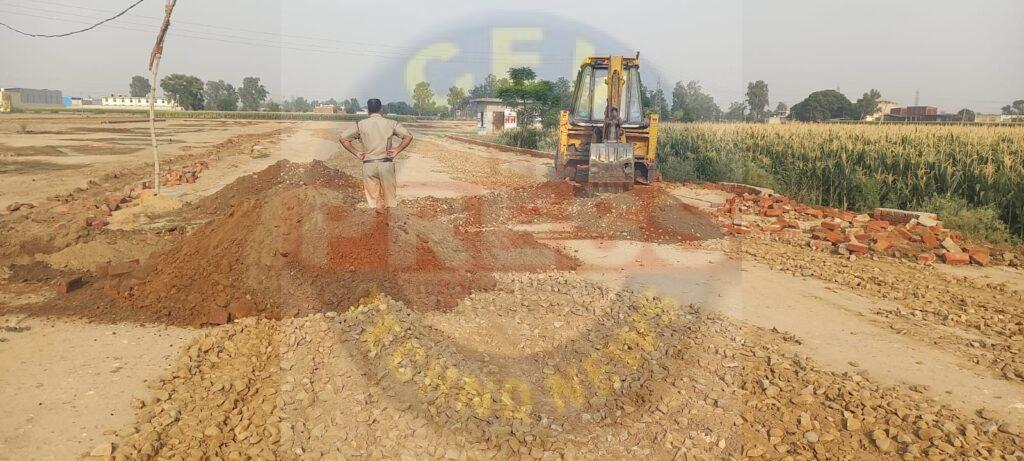EARTH WORK IN EMBANKMENT- ALL YOU NEED TO KNOW
The process of cutting and removing earth from borrow pits, transporting and placing it as a fill in the form of an embankment is known as an earthwork in embankment or filling. When the formation level of a road is to be kept higher than the natural ground level, the road is run in filling.
General. Earth used for constructing the embankment should be of good quality. It should be free from pig-clogs, modules and other impurities as vegetable growth or weeds etc.
Marking out. The centre line shall first pegged out and marked with “Dag Bell”. All curves shall be properly line laid out and the indicating the toe of the embankment shall then be set out.
Profiles. Before constructing the road embankment, rough profiles of the embankment shall be constructed with the help of rope so that the earth may be filled according to specification. For the construction of profiles, bamboos are at a distance of about 5 m usually erected and a rope is stretched along it to give the approximate profiles.
Surface stripping. Earth work shall be carried out and finished in accordance with the drawings or as ordered by theExecutive Engineer. Before placing the earth fill, the surface area of ground which will be covered by earth work shall be cleared of trees and bushes, and the surface shall be then be ploughed over.
Barrowpits. Earth may be obtained from barowpits shall be at least 15 m away from the toe of the bank, but these should be located in the acquired land. All barrowpits shall be dug to one depth. No barrowpit shall be greater than 30 cm in depth. Barrowpits shall not be dug continuously. Ridges of not less than 3 m width should be Jeft at intervals not exceeding 30 m.
Dead man” or “matams” shall be left at points indicated by the Engineer incharge. The dead man shall remain intact till measurements are completed, but final payments shall be deferred till all dead man are removed.
Completion. The earth shall be filled in concave layers of thickness not more than 15 cm, each layer being properly and thoroughly compacted with sheep foot roller, before the next layer 1s placed at the top and compacted. Earth work should be started from the outward to the inward of the bank.
Measurement. Where earth is obtained from barrowpits, the measurements of barrowpits shall be in fairly uniform ground, made. The quantity shall be worked out in cum (.e., length x breath x depth “DeadMan” of “tell-tales” should be left at suitable intervals to determine the average depth of barrowpits.
The earthwork in embankment is carried out in the following steps:
- Making Profiles Of Embankment
Profiles of the embankment are constructed with poles and strings. These are constructed at 30 m intervals for guiding labour. For ordinary embankments, 10 % allowance for settlement is kept while making profiles.
- Stripping And Storing Top Soil
After making the profiles of the embankment, the top soil of the site is stripped to the specified depth and stored at a suitable location.
- Constructing Embankment
After stripping and storing top soil, the original ground is compacted by rolling with 8 – 10 ton roller. Then filling is started in layers not exceeding 250 mm and compacted with road roller.
These layers are kept slightly concave in shape. The successive layers of the earth should be placed only when the previous layer has been thoroughly compacted.

